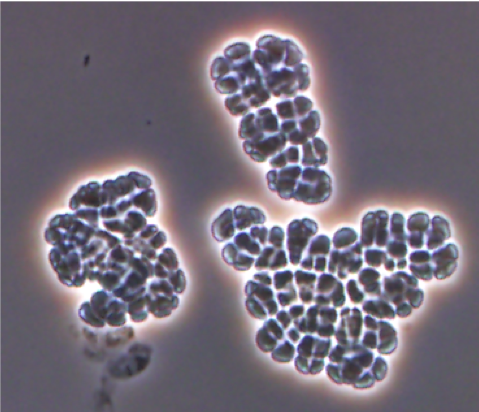
Overview
Archaea comprise a distinct group of life forms that are among the most abundant organisms on Earth yet biologists have overlooked them for decades. The core focus of our research is to develop a fundamental understanding of Archaea and their impact on humans and the environment using a subset of organisms called methanogens.
Methanogens derive their name from a metabolism unique to Archaea called methanogenesis i.e., the ability to couple growth and energy conservation to the generation of methane gas. Given that methanogens inhabit nearly every ecosystem – from hydrothermal vents, to the rumen of cows and the human gastrointestinal tract –their biological significance cannot be understated. Methanogens are the largest source of methane, a greenhouse gas that is 104 times more potent than carbon dioxide on a ten-year timescale. As inhabitants of the human gastrointestinal tract, methanogens exert significant influence on calorie intake, adiposity, and cardiovascular health in humans. By proliferating in anoxic environments that are reminiscent of conditions on early Earth, methanogens also provide a glimpse into the origins of life too.
Altogether, our goal is to develop methanogens as a model system to gain insights into the biology of Archaea and also unravel their impact on the past, present, and future of life on Earth.
Brief Description
We use methanogens belonging to the Genus Methanosarcina as a model system to address a range of questions about Archaea at the intersection of physiology, biochemistry, evolution and cell biology in a laboratory setting. Methanosarcina spp. were among the first methanogens to be isolated and hundreds of different strains within this Genus have now been cultivated and sequenced. These strains encapsulate a variety of environmental adaptations, ecological niches, metabolic strategies and many of them are genetically tractable. This ideal combination of traits makes Methanosarcina spp. a favorable model system to study methane metabolism as well as archaeal biology, more broadly. Notably, we have recently developed high-throughput CRISPR-Cas mediated genome editing tools for facile and rapid genetic manipulation of Methanosarcina spp. which, up until now, is the first and only successful application of Cas9-mediated genome editing in the Archaea.

Currently, we are using Methanosarcina spp. as a model system to pursue four major research themes as follows:
– Biochemistry of Enzymes and Energy Conservation Modules Involved in Methane Metabolism
(Group Members: Blake Downing, Dr. Dinesh Gupta, Dr. Grayson Chadwick, Katie Shalvarjian, Sophia Adler, Gavin Dury)
– Mechanisms of Signal Transduction and Gene Regulation in Methanogens
(Group Members: Dr. Fernando Medina Ferrer, Katie Shalvarjian, Annelise Goldman)
– Evolution and Function of Eukaryotic Signature Proteins in Archaea
(Group Members: Alienor Baskevitch)
– The Isotopic Composition of Microbial Methane
(Group Members: Dr. Jonathan Gropp)
We will continue to update this page with details on each theme and encourage those of you interested in any specific research theme to reach out by email to learn more.
© Nayak Lab 2021.
All rights reserved.